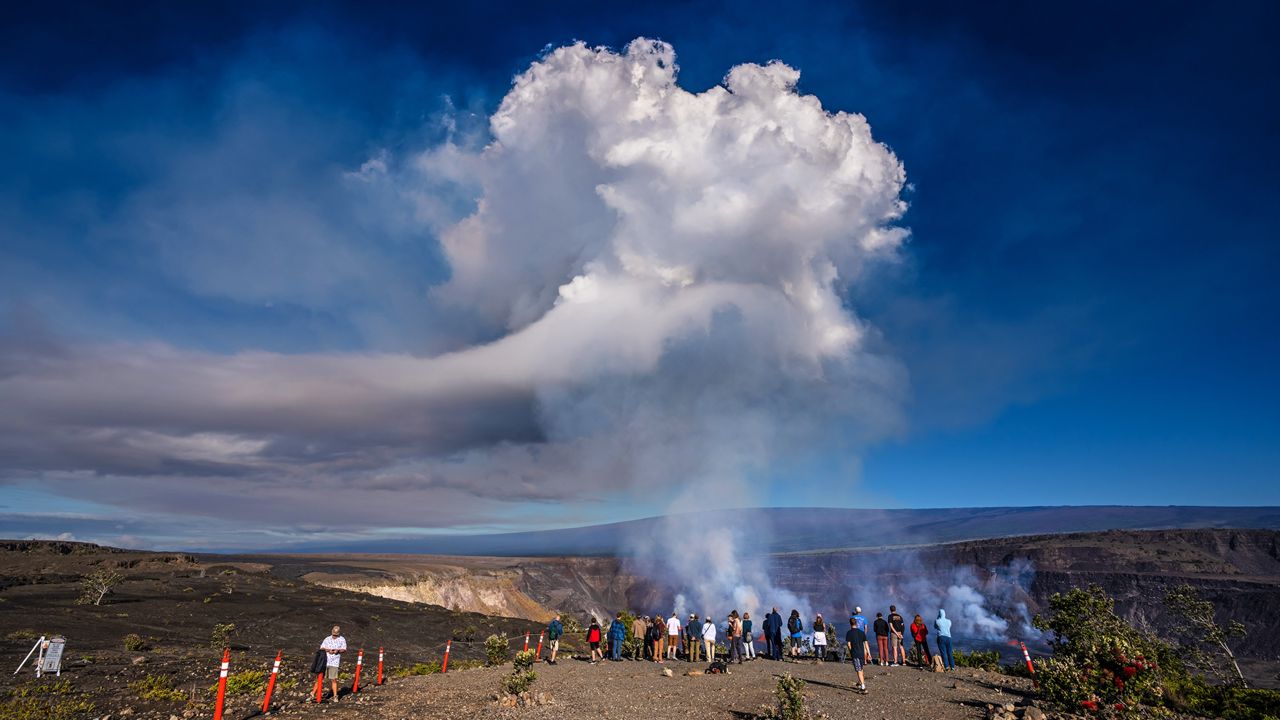HAWAII VOLCANOES NATIONAL PARK, Hawaii — Enormous crowds are flocking to Hawaii Volcanoes National Park to see the eruption at Kīlauea summit that started in the early morning on Wednesday, according to Jessica Ferracane, the park’s spokesperson.
As of Friday, the eruption is contained in Halemaʻumaʻu crater within Kīlauea’s summit caldera. On the western side of the crater, multiple fountains are spewing lava about 33 feet high.
More than 10,000 visitors entered the park on Wednesday and Thursday, respectively.
“That is about triple the number of visitors on a normal day, when Kīlauea is not erupting,” said Ferracane.
She said that “overflow” parking lots were opened to accommodate the influx of visitors, but even those filled up.
Ferracane said she left the park on Thursday at 8 p.m. to head to her home in Mountain View, and “there was just a steady line of headlights driving up Highway 11 to the park entrance.”
King Kamehameha Day is a state holiday observed on Monday, and many Hawaii residents will have a three-day weekend, increasing the number of people headed to the park. The summer travel season also means many visitors are currently in Hawaii.
“We’re expecting a really busy weekend,” said Ferracane. “It’s all hands on deck.”
She said the busiest time of day is between 4:30 p.m. to 10 p.m.
High levels of volcanic gas are a primary concern for visitors, especially for people with respiratory and heart problems, young children and pregnant women, but currently, trade winds are blowing them away.
“The air quality has not yet been an issue,” said Ferracane.
While Ferracane loves the excitement of the eruption, she also urges visitors to be careful.
“People are getting really close to cliff edges. Cliff edges are seriously dangerous and you might not see them,” said Ferracane. “People see the glow (of the lava) and they just go, go, go, they’re like a moth to a flame.”
She recommends people remain on marked trails, stay out of closed areas, and bring flashlights or headlamps.
Michelle Broder Van Dyke covers the Hawaiian Islands for Spectrum News Hawaii. Email her at michelle.brodervandyke@charter.com.



